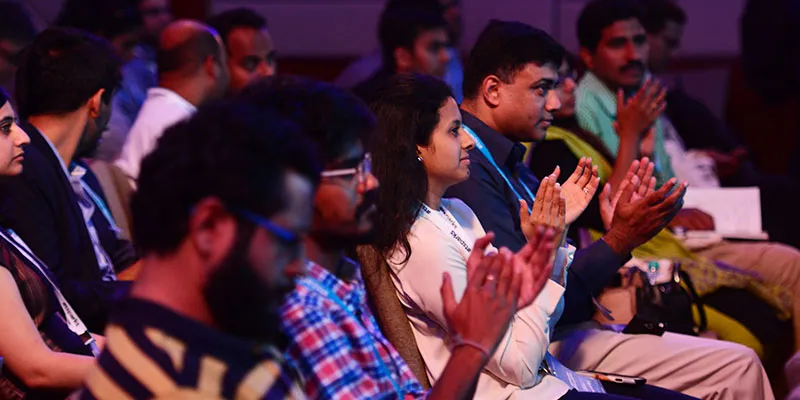'The next big wave is computing for local Indian languages,' Sahil Kini
If you are dreaming of building for a billion users in India and thinking about doing it in English, you’ve got it all wrong. Sahil Kini, Vice-President, Portfolio, Aspada, threw this wet towel on the hopes of aspiring entrepreneurs at the sixth edition of TechSparks in Bengaluru on Friday.

Consider this: there are approximately 100 to 120 million English speakers in India. That’s a very tiny 10 percent of the population. However, according to Sahil, if one goes by the ability to read English, this number dwindles to 60-80 million people. India today speaks 780 languages (Source: ‘Peoples Linguistic Survey of India’) represented in 86 different scripts. Twenty-nine of them are spoken by at least a million people, and 22 are recognised by the Constitution as official languages.
Sahil, who can speak seven Indian languages, talked about computing in our mother tongue to take technology to a billion users.
We are doing to our languages what the East India Company did to us,

he said. In the same vein as the colonial insult of ‘Dogs and Indians not allowed,’ we are excluding more than half the population of India which does not speak English. The ground reality is that non-English speakers are not allowed.
Sahil said he had a big problem with that, as should all of us. According to him, English accounts for 56 percent of online content. So what is keeping developers from opening the gates to the non-English speaking population?
Throwing a challenge to the developers looking for tough problems to solve, Sahil said local language is not only translations, but creation + comprehension + discovery. That’s the entire stack Reverie (Tech30 alumni and an Aspada portfolio company) offers, said Sahil, who has now joined the board of the company.
To offer a truly rich search experience to users in the native languages, all the other elements of the stack namely fonts, font rendering, native and transliterative input, and domain-specific translation must work together intelligently,
he added.
According to him, “The unsolved problems in computing in local Indian languages are manifold.” It is the problem of accessing beautiful fonts, the issues with spelling and grammar check (stuff that is taken for granted in English), and speech to text. The list just goes on.

While speaking in our local language, we often intersperse English words, and according to Sahil, any search algorithm that hopes to work in the local language market must hold this to be axiomatic. Search is truly the Holy Grail. Take Hindi, for example. The word ‘play’ can mean any of these: ‘khel’ (as in, to play a sport), ‘bajao’ (play music) or ‘natak’ (a drama). Will machine translation be able to distinguish?
Considering entrepreneurs disrupt, it is high time they turn the tide towards Indian languages. That’s where the next big wave is coming from.
A big shoutout to TechSparks 2015 sponsors – Sequoia Capital, ICICI Bank, Money on Mobile, Microsoft, Signal Hill, IBM Bluemix, PwC, Atom Tech, Teamchat, Govt. of Karnataka, Intel, Rabbler, Dailyhunt, Reverie, Loginext and PayUBiz; Partners – Duff&Phelps, Taxmantra, Dineout, Exotel, 360ride, Yoga Bar, Chai Point, GWC; and our Media Partners – TV9, Fortune India, RedFM and Deccan Herald.







